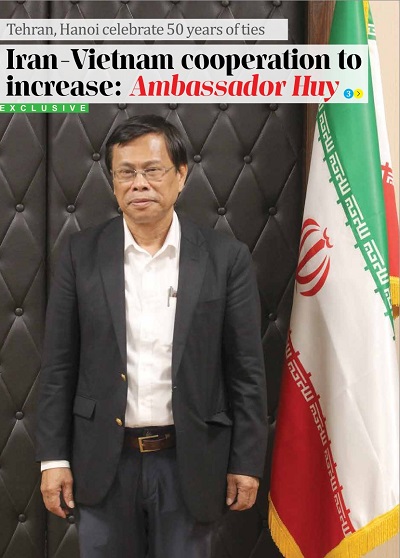The significance of Vietnam in the world
Vietnam is evolving as a growing power in the middle of the Indo-Pacific region and an increasingly significant partner for several chief global players.
The area of Vietnam is 331,699 square kilometers, holding 103 million people. The country’s capital city is Hanoi, and Vietnam’s life expectancy is 71 years for men and 79 years for women.
The country used to be one of the world’s poorest and most isolated countries. Now, Vietnam is a middle-income country with a vibrant, young population and an auspicious future.
Since the country joined ASEAN in 1997, she has played a significant part in regional diplomacy and development. Her foreign policy’s goal is to act as a “friend and reliable partner to all countries in the international community”. Vietnam has established partnerships with Japan, China, India, Russia, and other Western countries like the United States and the European Union nations.
Although the ensuing effects of COVID-19 have been hard to control, Vietnam’s economy has been growing at the highest rate in the entire Southeast Asia region.
The country’s economic strength, which creates a suitable ground for absorbing investment can be summarized as followed.
Vietnam is in a very strategic place, which makes it an important destination for manufacturing and China+1. She is located along shipping and transport routes, bordering South China, and centered along East Asia.
Vietnam has a growing economy with a strong GDP growth consistently outperforming its global and regional equals. In 2022, the country experienced a high record of 8.0% y/y growth, which was 3.3% in the first quarter of 2023.
Vietnam has a stable government with a concrete economic vision, reasonable policy control, low investment obstacles, and robust incentive schemes relative to similar markets.
Doing business with Vietnam is remarkably easy. The country has set a record in the fair and improving ease of doing business rankings for foreign investors.
Vietnam has a large and young labor force of nearly 60 million workers, which is growing by 1 million workers every year.
Vietnam has matured Economic Zones, Industrial Parks, Business Districts, and Residential Centers.
Vietnam has a strong Foreign Direct Investment (FDI) environment. The FDI has been $19.7 billion in 2021 projects disbursed and $31.2 billion including paid-in capital.
Vietnam is experiencing growing consumer spending. The country’s population is exceeding 103 million, with a swiftly growing middle class and mounting services sector that surpasses 40% of GDP.
Vietnam has a strong network of free trade agreements (FTA), and she is a signatory of more than 18 free trade agreements, giving trade advantages through countries in APAC, ASEAN, Europe, and elsewhere globally.
Vietnam has been successfully integrated with legal frameworks. The country is a member of the World Trade Organization (WTO) and a signatory of most major worldwide intellectual property protection conventions, protocols, and agreements.
However, Vietnam’s rapid economic growth is putting pressure on its energy sources, especially since there have been power outage problems for businesses nationwide.
The Ukraine conflict and subsequent sanctions on Russia have made many countries — especially in Europe — seek alternative energy sources, leading to an increase in the price of coal and other energy sources. This particularly makes things harder for Vietnam as almost 53% of its electricity is supplied by burning coal. Its other major sources of electricity-generating power are hydro (consisting of 26%), natural gas (26%), and non-hydro renewable (around 5%). This hunger for energy sources can be satisfied by importing natural gas, particularly in the form of Liquified Natural Gas (LNG).
Vietnamese government plans to import LNG in the southern part of the country to help fulfill the rising demand for gas, particularly in the power sector. PetroVietnam (PV) Gas, a subsidiary of PetroVietnam, is developing the 67 Bcf/y-Thi Vai LNG terminal in the Vung Tau province in southern Vietnam. This terminal is scheduled to serve industrial and power consumers in the nearby area. A second terminal, Son My LNG, is planned to be built in several phases, with the first phase having a capacity of 86 Bcf/y. Son My LNG is intended to serve a new gas-fired power project in southern Vietnam. The Vietnamese government expects both terminals to come online in 2023.
This provides a great opportunity for countries that like to expand energy cooperation with Vietnam, especially by offering better delivery and competitive prices in the market. Although Vietnam still satisfies almost half of the country’s energy need with coal, the current rising cost of coal and the global concerns over carbon emissions, greenhouse gasses accumulation, acid rains, and several other serious negative environmental impacts of burning coals seem to encourage the country to import more natural gas to replace coal. The latter may seem cheaper, but the long-term health impacts on Vietnam and the neighboring countries, combined with attractive terms, will eventually lead coal-burning countries to balance growth rate with burning high-emission fuels like coal and go toward increasing importation of natural gas.












نظر شما